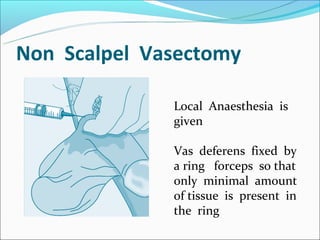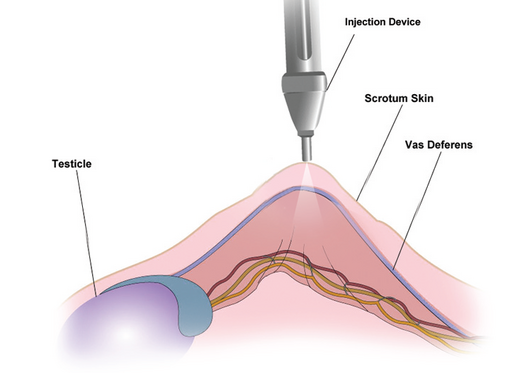
No-Scalpel Vasectomy (NSV) is a minimally invasive surgical procedure for male sterilization that has gained popularity over the past few decades due to its advantages over traditional vasectomy. This article aims to provide an overview of NSV, including its procedure, benefits, risks, and recovery.
What is No-Scalpel Vasectomy?
No-Scalpel Vasectomy NSV is a surgical technique used to block the vas deferens, the tubes that carry sperm from the testicles to the urethra. Unlike traditional vasectomy, which involves making incisions in the scrotum, NSV uses a small puncture in the skin to access the vas deferens. A special tool is used to hold the vas deferens in place, and a small opening is made in the skin to access it. The vas deferens is then cut, sealed, or tied off, preventing sperm from reaching the semen.
Benefits of No-Scalpel Vasectomy:
NSV offers several advantages over traditional vasectomy, including:
- Less invasive: NSV involves only a small puncture in the skin, compared to incisions in the scrotum in traditional vasectomy, resulting in less bleeding, swelling, and discomfort.
- Quicker procedure: NSV usually takes around 20-30 minutes to complete, compared to 45-60 minutes for traditional vasectomy.
- Faster recovery: NSV patients typically experience less pain, swelling, and bruising, and can resume normal activities within a few days, compared to a week or more for traditional vasectomy.
- Lower risk of complications: NSV has a lower risk of complications, such as infection and bleeding, compared to traditional vasectomy.
- Highly effective: NSV is over 99% effective at preventing pregnancy and has a lower failure rate than other forms of contraception, such as condoms and birth control pills.
Risks of No-Scalpel Vasectomy:
While NSV is generally a safe procedure, there are some risks associated with it, including:
- Pain and discomfort: Some men may experience pain, discomfort, or swelling in the scrotum after the procedure, which can last for several days.
- Infection: There is a small risk of infection at the puncture site or in the scrotum, which can be treated with antibiotics.
- Bleeding: Some men may experience bleeding or bruising in the scrotum, which can be managed with ice and pain medication.
- Failure: While NSV is highly effective, there is still a small chance that the vas deferens may reconnect or a new channel may form, resulting in pregnancy.
Procedure for No-Scalpel Vasectomy:
NSV is typically performed in a doctor's office or clinic under local anesthesia. The procedure involves the following steps:
The patient is asked to lie down on their back with their legs spread apart.
The scrotum is cleaned with an antiseptic solution, and local anesthesia is administered to numb the area.
A small puncture is made in the skin of the scrotum using a special tool called a hemostat, which spreads the tissue apart without cutting it.
The vas deferens is located and pulled out through the puncture with another special tool called a ring clamp.
A small section of the vas deferens is removed, and the ends are sealed, tied, or cauterized.
The vas deferens is then placed back into the scrotum, and the small puncture is covered with a bandage.
No-Scalpel Vasectomy How Its Work?
No-Scalpel Vasectomy (NSV) is a surgical procedure that blocks the vas deferens, the tubes that carry sperm from the testicles to the urethra. The procedure is performed without making incisions in the scrotum, which is why it is called "no-scalpel."
During NSV, a small puncture is made in the skin of the scrotum using a special tool called a hemostat. The hemostat spreads the tissue apart without cutting it, allowing the surgeon to access the vas deferens.
The surgeon then uses a ring clamp to hold the vas deferens in place and make a small opening in it. A small section of the vas deferens is removed, and the ends are sealed, tied, or cauterized to prevent sperm from passing through.
The vas deferens is then placed back into the scrotum, and the small puncture is covered with a bandage. The procedure usually takes around 20-30 minutes to complete and is performed under local anesthesia.

NSV works by preventing sperm from reaching the semen, which makes it an effective form of contraception. After NSV, semen still contains fluid from the prostate and seminal vesicles, but it does not contain sperm, so the person cannot impregnate their partner.
NSV does not affect a person's ability to have an erection or orgasm, nor does it change the production of testosterone, the male sex hormone. The person can still ejaculate normally, but the semen does not contain sperm.
It is important to note that NSV is not immediately effective in preventing pregnancy. It takes time for any remaining sperm to be cleared from the vas deferens and for the person to become sterile. It is recommended that the person use another form of contraception, such as condoms or birth control pills, for several weeks after NSV until a follow-up sperm count confirms that no sperm are present.
If you want to get amazing benefits by using this link
Final Words:
NSV is a safe and effective form of contraception for men who do not want to have children. It offers several advantages over traditional vasectomy, such as less invasiveness, quicker procedure, faster recovery, and lower risk of complications. It is important to discuss all options with a healthcare provider and make an informed decision based on individual circumstances.


